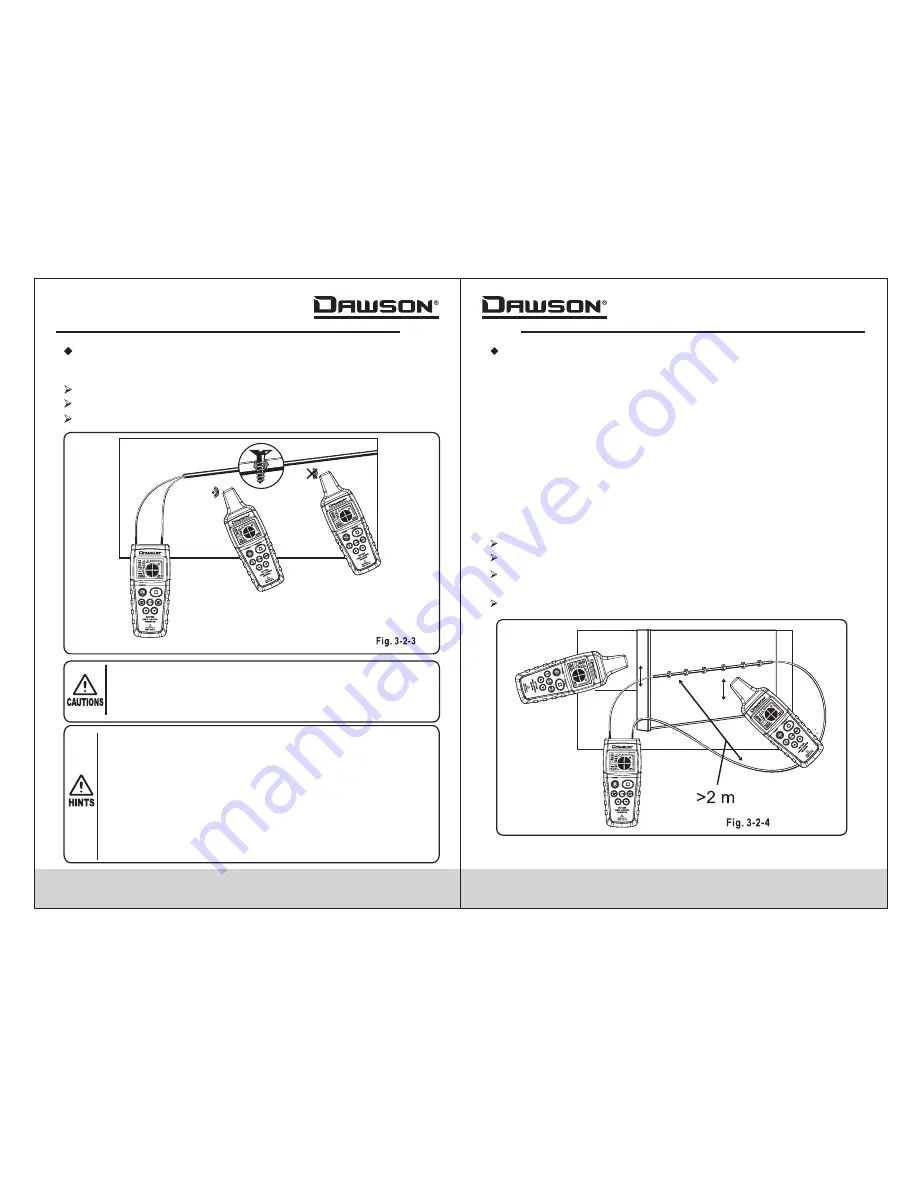
29
30
3.2.3 Finding a short in a circuit
CANNOT be a live circuit
Connect the transmitter as in fig. 3-2-3.
Follow the example for measurement as shown.
1. Cut off power to make sure there is no current in the
circuit to be measured beforehand.
2. When attempting to locate shorts in insulated wires/cables,
detection depth may vary. Detection of shorts may only be
possible in circuits with an impedance of less than 20
Ω.
1. If the impedance of the short circuit is more than 20
Ω
, switch
to finding a breakage in the circuit. Use a relatively large
current to temporally bridge the short or break it to get the
best results.
2. If the signal suddenly attenuates while searching using the
receiver, this indicates where the short may be.
3. Adjust the transmitter power to get an adequate signal
depending on the detection environment.
4. You can put the receiver into manual mode and adjust its
sensitivity to pick up the signal from the transmitter ad
equately.
Preconditions:
CANNOT be a live circuit
Connect the transmitter as shown in fig. 3-2-4
The distance between the laid line and the connecting
line to the transmitter needs to be greater than 2-2.5m.
Follow the example as shown
3.2.4 Detecting deeply laid circuits
In dual pole applications, if the measured line is made of
multiple wires within the same cable (i.e. standard power
cable), the detection depth can be very limited due to the
short distance between feeding line and loop line causes
a distorted magnetic field. If a separate, longer loop line
is used to connect the transmitter to the ends of the of the
tested line, this problem can be worked around because
the extra line should help diffuse the magnetic field.The
distance between the extra line and the line to be
measured should be greater than 2m (~6.5ft).
Preconditions:




















